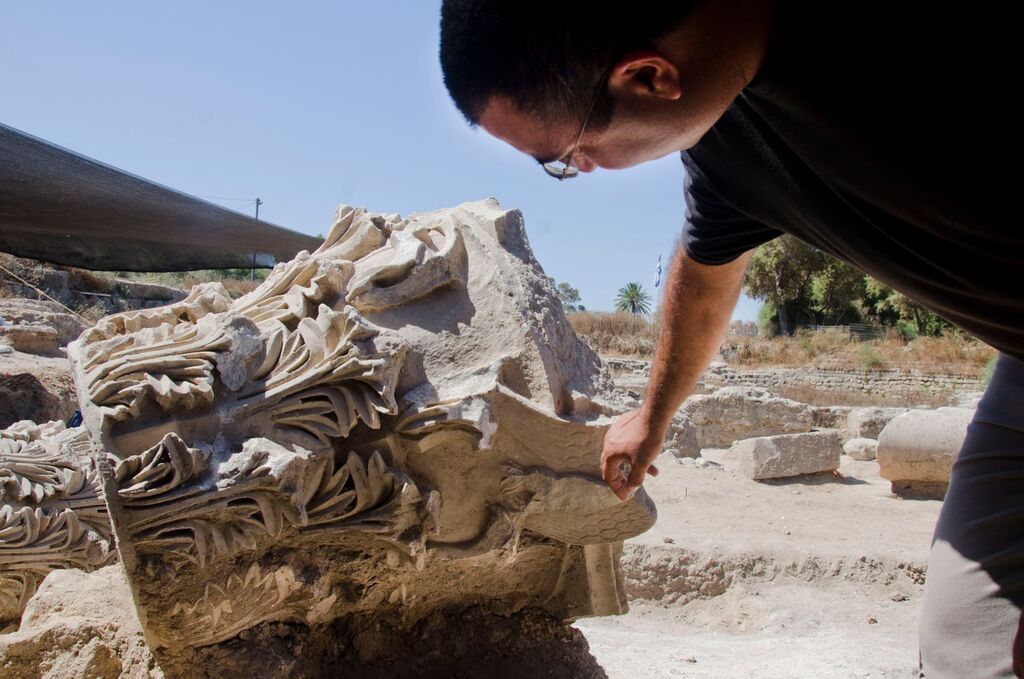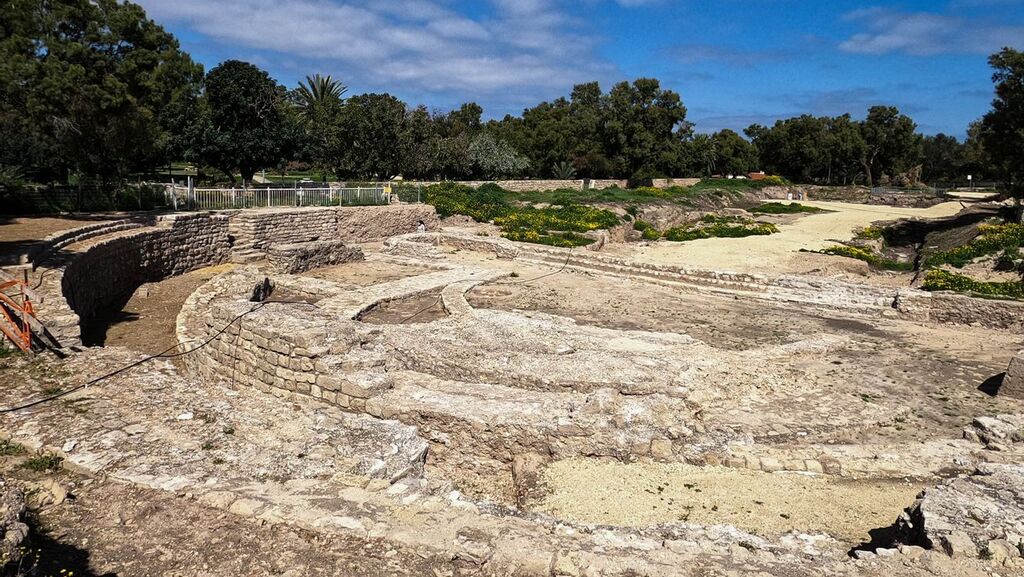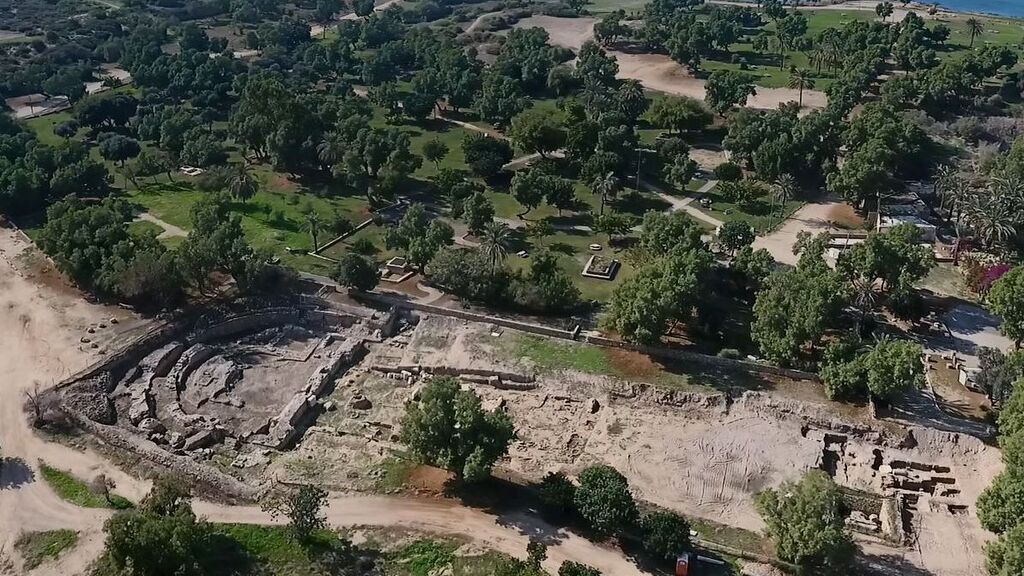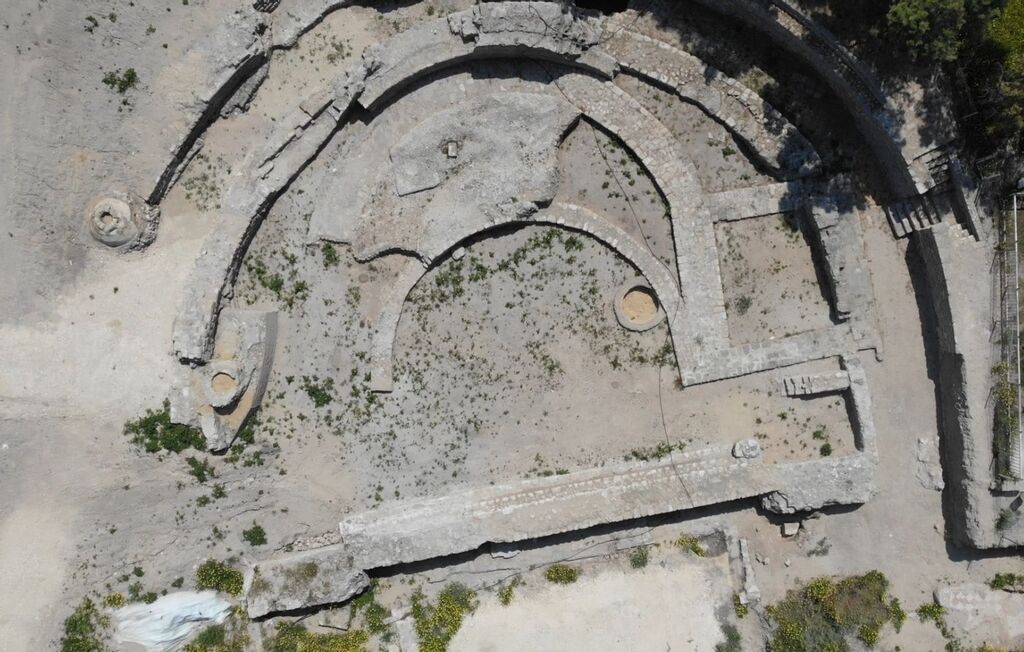A development project in Tel Ashkelon National Park in the southern city of Ashkelon revealed the spectacular archaeological remains of a magnificent 2,000-year-old basilica.
The Roman Basilica complex, the largest of its kind in Israel, was unearthed during archaeological excavations as part of an extensive development project in the national park, overseen by the Nature and Parks Authority.
2,000-year-old Roman basilica unearthed in Ashkelon
During the Roman period, the public life of any Roman city revolved around its basilica, a public building where its citizens conducted business, met for social and legal matters, and held performances and religious ceremonies.
Dr. Rachel Bar-Natan, Saar Ganor and Fredrico Kobrin, excavation directors on behalf of the Israel Antiquities Authority (IAA), said that “the huge building is covered with a roof and divided into three parts — a central hall and two side halls."
"The hall was surrounded by rows of marble columns and capitals, which rose to an estimated height of 13 meters and supported the building’s roof. The floor and walls were built of marble.”
The marble was imported from Asia Minor in merchant ships that reached the shores of Ashkelon, which was a famous, bustling trade city. Roughly 200 marble items weighing hundreds of tons have been found in all, testifying to the building’s great splendor.
4 View gallery


Archeologist Saar Ganor looking at one of the pillars found at the basilica
(Photo: Israel Antiquities Authority)
Dozens of column capitals with plant motifs were discovered, some bearing an eagle — the symbol of the Roman Empire. Pillars and heart-shaped capitals stood in the corners of the building.
Nature and Parks Authority Director-General Shaul Goldstein said: "The Tel Ashkelon National Park combines a fascinating antiquities site with unique natural values that characterize the sands of the coastal plain."
"The unveiling of the basilica and the odeon — a chamber which served the same function as a theater during ancient Rome — together with the development, preservation and restoration, which include raising the pillars and ancient marble sculptures found in the site... will undoubtedly enhance any visit to the site."
4 View gallery


A chamber known as an odeon, which served the same function as a theater, was built to the side of the basilica
(Photo: Nature and Parks Authority)
The basilica was built by Herod the Great, and one historical source suggests that his family came from the city of Ashkelon. During the Roman Severan Dynasty, in the second and third centuries CE, the building was renovated, marble architectural features were brought to the site and a small odeon, theater, was added.
Herodian coins discovered in the bedding of the structure’s ancient floors show that it was built at the time of one of the greatest builders ever to have lived in the country. The writings of the historian Josephus mention Herod’s construction in the city of Ashkelon and list fountains, a bathhouse and colonnaded halls.
Excavations by the British in the 1920s unearthed huge statues, including a statue of Nike, the goddess of victory, supported by the god Atlas holding a sphere, and a statue of Isis – an Egyptian deity depicted as Tyche, the city’s goddess of fortune.
The basilica was devastated by the earthquake that struck the country in 363 CE. The effects of the seismic waves are clearly visible on the building’s floor, providing tangible evidence of the events of that year in Ashkelon. After its destruction, the building was abandoned.
During the Abbasid and Fatimid periods, the site of the basilica was transformed into an industrial area and several installations were built in it. In one of these, marble pillars and capitals from the basilica were incorporated in secondary use in the buildings’ walls.
There is evidence from the Ottoman period that marble items were cut up for use as paving stones and some of the beautiful architectural features were taken for building construction.





